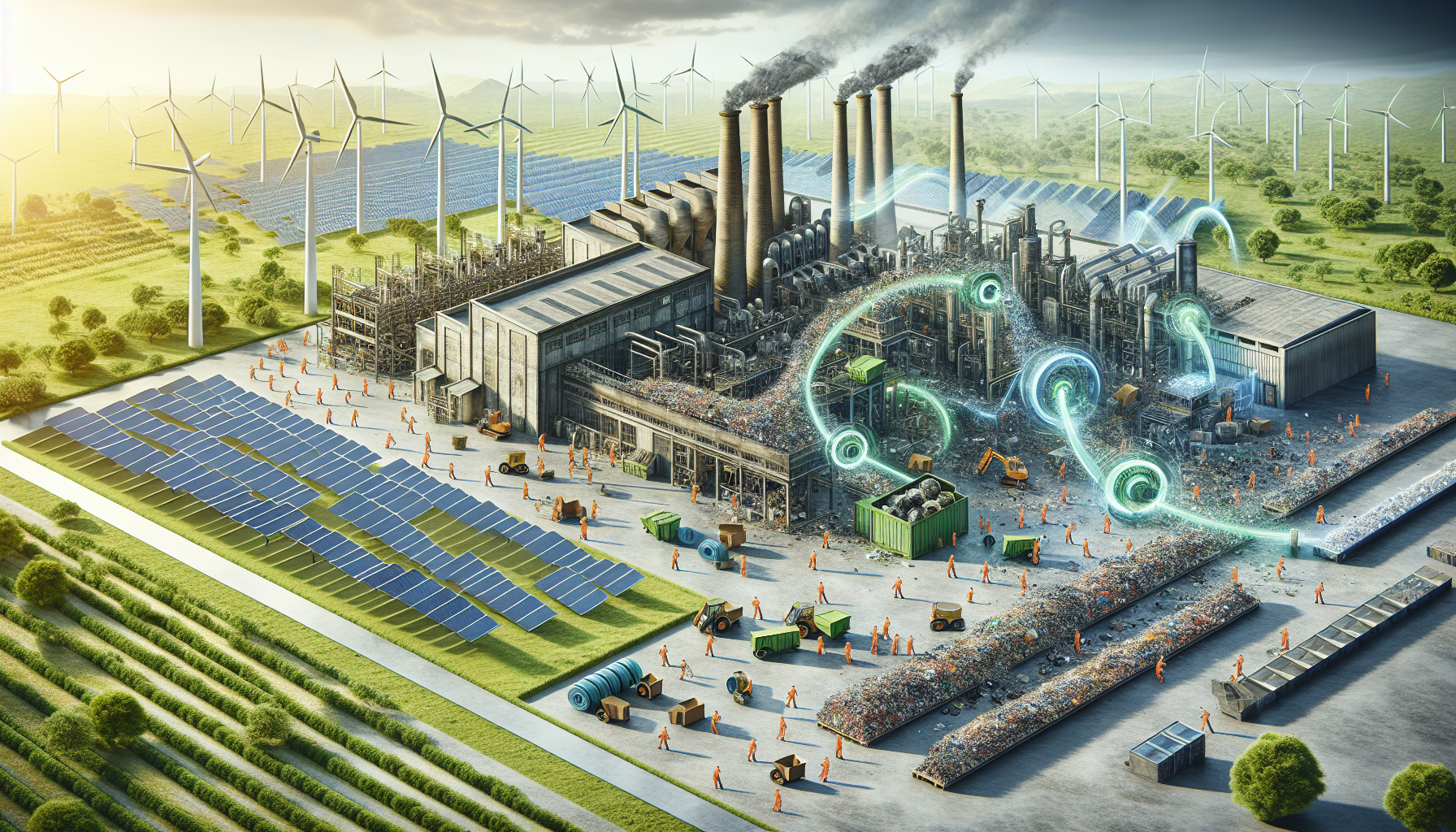Advertisements
The circular economy has emerged as an increasingly relevant trend in the business world. Companies from various sectors have adopted sustainable and innovative practices, aiming not only to reduce environmental impacts, but also to increase their profitability. In this scenario, the circular economy emerges as a promising alternative to transform the way businesses operate, promoting the reuse of resources and materials, and reducing waste generation.
The transition to a circular economy model is not only a matter of environmental responsibility, but also an opportunity for companies to innovate and stand out in the market. Adopting sustainable practices can generate significant savings in production costs, while strengthening the company's image in the eyes of its customers and stakeholders. In addition, the circular economy is driving the creation of new business models based on principles of sustainability and efficiency.
In this context, it is essential that companies are aware of the opportunities and challenges that the circular economy presents. By adopting innovative strategies and solutions, it is possible not only to contribute to a more conscious and sustainable future, but also to ensure the competitiveness and profitability of businesses in the long term. The sustainable revolution is underway, and companies that know how to adapt and reinvent themselves will be the protagonists of this movement towards a more prosperous and balanced future.
Impact of the circular economy on business
The circular economy has become increasingly relevant in the business world, transforming the way companies operate and positively impacting the environment. This sustainable economic model aims to eliminate the concept of waste by reusing and recycling materials to create a continuous cycle of production.
Reduce waste and increase efficiency
One of the main advantages of the circular economy for companies is the reduction of resource waste. By adopting reuse and recycling practices, organizations can make the most of materials, reducing costs and increasing operational efficiency. In addition, recovering discarded materials generates new business and innovation opportunities.
Advertisements
- Minimizing environmental impact
- Increased competitiveness in the market
- Greater engagement of employees and consumers
New sustainable business models
The circular economy is driving the creation of new sustainable business models based on the reuse, sharing and recycling of resources. Companies across a range of sectors are adapting to this change by developing more durable products, implementing reverse logistics programs and seeking partnerships with other organizations to close the production cycle.
- Development of eco-efficient products
- Creating more sustainable supply chains
- Promotion of the collaborative economy
Challenges and opportunities for the future
Despite the clear benefits of the circular economy, companies still face challenges in its implementation, such as the need to invest in technology and infrastructure. However, these challenges also represent opportunities for companies to stand out in the market, winning over more conscious consumers and contributing to building a more sustainable and profitable future.

The transition to a circular economy requires significant effort from companies, but it also has clear benefits. By implementing practices such as reverse logistics and eco-efficient product design, organizations not only reduce waste but also create value throughout the supply chain. Initiatives such as resource sharing, extended product maintenance, and material reuse have generated new business opportunities and strengthened consumer and employee engagement. This sustainable approach also favors increased competitiveness, as companies that adopt these models stand out in a market that is increasingly demanding in terms of environmental responsibility. In addition, the circular economy promotes strategic partnerships, encouraging collaboration between different sectors to create innovative and sustainable solutions.
However, the success of the circular economy requires companies to overcome important challenges, such as the need to modernize processes, invest in advanced technologies and change organizational mindsets. The transition may be complex, but it is essential to meet the expectations of conscious consumers and the regulatory requirements that are emerging globally. Furthermore, aligning with the principles of the circular economy positions companies as leaders in the movement towards a more sustainable future, creating shared value for society and the environment. With increasing government incentives and a cultural shift in favor of sustainability, organizations that invest in circular solutions will have a greater chance of standing out and thriving in the long term. Thus, the circular economy is not just a passing trend, but a model that redefines the pillars of economic growth and innovation.
Conclusion
In short, the circular economy is driving a true revolution in business, encouraging companies to adopt more sustainable and conscious practices. Reducing waste, increasing operational efficiency and minimizing environmental impact are just some of the advantages that this economic model brings to organizations. In addition, the circular economy is driving the creation of new business models based on the reuse, sharing and recycling of resources, paving the way for innovation and competitiveness in the market.
Advertisements
Despite the challenges that companies face in implementing the circular economy, such as investments in technology and infrastructure, these obstacles represent opportunities to stand out and win over increasingly conscious consumers. By promoting the collaborative economy, developing eco-efficient products and creating more sustainable supply chains, companies can significantly contribute to building a more sustainable and profitable future. Ultimately, the circular economy is transforming business towards a more conscious and responsible scenario, where business success is intrinsically linked to the preservation of the environment and the well-being of society.
The circular economy represents a paradigm shift that goes beyond simply adopting sustainable practices: it is an opportunity to rethink the entire production and consumption cycle. This economic model promotes not only efficient use of resources, but also encourages innovation, collaboration between sectors and the creation of shared value. Companies that embrace the circular economy not only strengthen their position in the market, but also take on a leading role in building a more balanced society. Thus, the transition to this model is not only a strategic choice, but a necessity to ensure economic, environmental and social viability in a world that demands increasingly responsible and innovative solutions.




